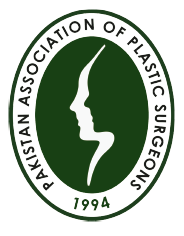Lasers are used to treat many skin conditions and skin resurfacing. Since LASER is light, it can be of different wavelengths and each targets different tissues at different depths. The light focusses on a specific point and damages the cells. LASER can be ablative (damages outer layer of skin) or nonablative ( works deep without affecting outer skin layer).
SYMPTOMS
- Acne: fractional CO2 LASER is the gold standard for treatment of deep acne scars although erbium:YAG, fractional laser and certain nonablative lasers have shown success with superficial acne scarring. For the treatment of active acne, LED technology has proven to be quite effective.
- Pigments: IPL LASERS are used to treat pigmented skin caused by sun damage. Laser targets melanin(pigments) in dark spots. Nd:YAG LASER is best for tattoo removal
- Moles: Benign (non cancerous) , flat moles can be removed by multiple sessions of ablative laser.
- Vascular lesions: IPL is minimally invasive and is the commonest used laser for treatment of vascular lesions like birth barks (port wine stains, hemangiomas, etc), and spider veins on legs and face Also popular for treating these lesions are the pulsed dye, Nd:YAG and diode lasers.
- Scars: Ablative laser like fractionated CO2 LASER is used to treat scars. It removes superficial skin over scars thus improving its appearance
- Hair removal: Lasers are useful for removing unwanted hair from the face, leg, chin, back, arm, underarm, bikini line, and other areas. Lasers selectively target dark, coarse hairs while leaving the surrounding skin undamaged. Usually 3 to 7 sessions are required for permanent results.
PROCEDURE
Laser treatments are office based procedures. Local application of anesthetic drugs is required. . The laser equipment will be adjusted according to the color, thickness, and location of targeted skin or hair being treated. A gel is applied over the skin to protect the skin from damage. Hand held laser is placed on targeted tissue and a test procedure is performed by directing laser on target tissues. Tissue response is noted and then treatment is started.
FREQUENTLY ASKED QUESTIONS
1. How long will hair removal last after treatment?
Hair removal is permanent but it will need 4to 8 sessions. Hair type and skin type and patients factors will affect the treatment
2. Does laser treatment result in scarring?
No, it’s scar free. It scars only if you have tendency of developing hypertrophic scar or keloids
3. What is the approximate duration of the procedure?
It is variable, depending on area to be treated
4. At what age is laser resurfacing performed?
Laser resurfacing can be done at almost any age on people with skin damage from aging, sun exposure and acne scars, or those wishing to get rid of birthmarks, lesions, tattoos, body hair
5. What should happen post procedure?
This depends on the type of laser used and the size of the treated area. Expect your skin to look like it is badly sunburned and puffy; you may also experience some discomfort.
Written by : Dr. Yusra Afzal
Copyrights: Pakistan association of Plastic Surgeons

